Horse Travel Books - page 2
|
Horse Travel Books - page 2 |
For more information about any of these books, please contact the Long Riders Guild
| The Lost Oases - After being educated at Oxford, Sir Ahmed Mohammed Hassanein returned home to Egypt and served as a diplomat for King Faud. But Hassanein's love of adventure came to the fore in 1923 when he mounted his horse and made a remarkable journey across the centre of the Libyan Desert. More than two thousand gruelling miles later Hassanein emerged with tales of having not only located the “lost” oasis of Uweinat but having also discovered a cave which contained ten-thousand-year-old drawings. |
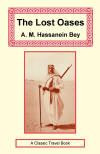 |
| Manual of Pack Transportation - Henry W. Daly became a packer in the late nineteenth century while helping Crook chase the Apache leader Geronimo across that blazing wilderness known as the Arizona Territory. This is is his masterpiece. It contains a wealth of information on various pack saddles, ropes and equipment, how to secure every type of load imaginable, instructions on how to organize a pack train, and the duties of various individuals including the chief packer, blacksmith, cook, etc. It is amply illustrated with both photographs and drawings. |
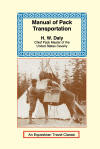 |
| Mogreb-El-Acksa - In 1897 Robert Cunninghame Graham attempted to ride into the Atlas Mountains of Morocco and reach the “forbidden” city of Taroudant. Of course there was one small problem. The Sultan had forbidden outsiders, especially Christians, from going there. The author flouted the danger, saddled his Barb horse and galloped straight into the teeth of one of the greatest desert stories ever told. Disguised in local clothes and calling himself “Sheikh Mohammad El Fasi,” the Scottish Long Rider posing as a Turkish doctor was only hours away from the elusive city when he was captured and kidnapped. |
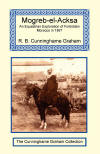 |
|
Mancha y
Gato Cuentan sus Aventuros ("The Tale of Two Horses" in Spanish) -
Es un
libro que The Long Riders' Guild Press ofrece a los niños: está escrito para
ellos. Los mil episodios plenos de aventura y de sana emoción que se
sucedieron durante los dos años que duró el arriesgado viaje están narrados,
como se hace en las fábulas, por Mancha y Gato: ellos mismos relatan sus
peripecias. Era un maestro de escuela que ambicionaba realizar una gran
empreso. ¿Cuál podia ser? Su espíritu romántico, con algo de aventurer y no poco de héroe, lo espoleaba de continuo. Se decidió por fin. Aimé Tschiffely era entre nosotros uno de esos extranjeros con corazón argentino: amaba lo nuestro, y, como algo muy nuestro, al “caballito criollo”. Formuló un aserto y se propuso demostrarlo: “El caballo criollo argentino es de una guapeza y resistencia a toda prueba – dijo – y no cede a ninguno en el trabajo duro y continuardo en cualquier condición”. |
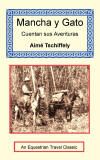 |
| Mongolian Adventure – Descended from a 19th Century Danish explorer, when young Henning Haslund reached Mongolia in 1923 he discovered a lost equestrian world left largely untouched since the Middle Ages. Cruel warlords ruled a vast grass covered kingdom inhabited by freedom-loving Mongols, tight-lipped Russian mercenaries and the human riff-raff of a dozen countries.
|
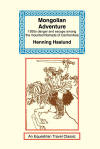 |
| My Life as an Explorer – Sven Hedin was not only one of the greatest explorers of the nineteenth century; he was also a brilliant storyteller. His equestrian journeys began in 1886, when he rode across Persia. He subsequently rode across the Pamir Mountains, across the Lop Nor Desert, penetrated Tibet, explored Mongolia and rode through China. My Life as an Explorer regales the reader with almost more adventure than one can bear to read. Hedin courts disaster with the Emir of Bokhara, climbs accursed mountains in China, discovers lost cities in the Gobi desert, outwits Torgut bandits, and of course becomes close friends with royalty from Peking to London. In short Hedin lived a life so full of adventure and escape that merely reading about it is exhausting.
|
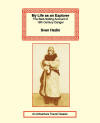 |
|
My Kingdom
for a Horse -
In the
autumn of 1939 a young English woman faced a difficult choice.
Margaret Leigh
had just sold her farm in Cornwall and wanted to return to her ancestral
home in the Highlands of Scotland. Yet how to get there? The obvious choice
would have included either a train or automobile. However Leigh had a strong
streak of adventure running through her. She opted for that altar of travel,
the saddle, dismissing those nay-sayers who said the deed couldn’t be done
in such a modern age. What followed can only be described as one of the most
delightful equestrian journeys of the early twentieth century.
|
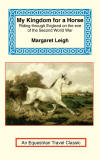 |
| Ocean to Ocean on Horseback – After surviving the American Civil War, Willard Glazier decided to attempt to become the first person to ride “from Ocean to Ocean.” Leaving New York state in 1875 on his horse, Paul Revere, the former trooper set out to see the mighty Pacific, many miles and many unexpected adventures away. The book includes an account of how he was kidnapped by Arapahoe Indians. Amply illustrated with pen and ink drawings of the time, the book remains a timeless equestrian adventure classic. |
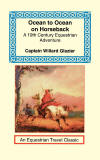 |
| On Horseback in Virginia - In 1887 Charles Warner combined his urbane wit with a love of adventure travel when he penned On Horseback in Virginia. The author set out on horseback to investigate a great, rugged stretch of southern Appalachia. The extended equestrian journey took him from Virginia, through North Carolina, and into the remote hills of Tennessee. Additionally, the book contains a second narrative account of Warner’s equestrian adventures in the Old West. This time he saddled up and rode from El Paso, Texas to Mexico City, Mexico. |
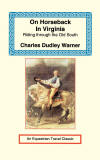 |
| On Horseback through Asia Minor - Captain Frederick Burnaby was the English Long Rider who had made a daring ride to Khiva in 1875. This book details how the following year Burnaby set off to ride 2,000 miles through Turkey. Ostensibly he was going to observe the Turks away from European influences. However Burnaby needed only the barest of excuses in order to undertake one of the nineteenth century's most courageous equestrian journeys. This book details how Burnaby eluded Russian agents who had orders to arrest him and rode through wild inhospitable country, encountering Kurds, Circassians, Armenians, and Persian pashas |
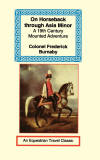 |
| The Marching Wind - During The Second World War Leonard Clark headed the United States espionage system in China. When that global conflict ended, Clark set off to ride across Tibet. He was eager to find and measure a mysterious mountain in the Amne Machin range rumoured to be higher than Mount Everest. The only problem was that the sacred mountain was guarded by the fearsome Ngolok tribesmen. |
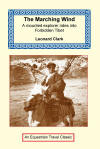 |
|
The Prairie Traveler - There were a lot of things you packed into your saddlebags or the wagon before setting off to cross the North American wilderness in the 1850s. A gun and an axe were obvious necessities. Yet many pioneers were just as adamant about placing a copy of Captain Randolph Marcy's “The Prairie Traveler” close at hand. Marcy conducted five major expeditions across the wilderness that was once the American West, then submitted a series of reports to the War Office describing the country, its vast resources, and the hazards involved in crossing it. It was from these original reports that the legendary frontiersman drew when he wrote what was to become an encyclopaedic work on frontier life. |
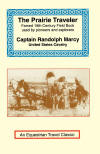 |
|
Reisen mit dem Pferd - Otto Schwarz rode more than 48,000 kilometres (30,000 miles) on horseback across five continents, making him the most well-travelled Long Rider of the 20th century. The story of Otto's many equestrian adventures is available for the first time in many years in this re-issued edition and includes a detailed supplement on how to prepare and undertake an extended equestrian journey. This important book, (written in German), belongs on the bookshelf of every student of equestrian travel. |
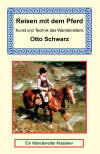 |
|
Ride a White Horse - The story of William Holt and his cart horse, Trigger, is one of the most inspiring equestrian travel tales ever told. After rescuing the gelding from slaughter, and then nursing him back to health, the 67-year-old Holt and his horse set out in 1964 on an incredible 9,000 mile, non-stop journey through western Europe. The book is a classic tale of a man and his beloved horse who embarked together on an extraordinary adventure |
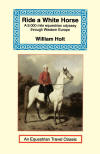 |
| Ride the Wind - Bud and Temple Abernathy were the tiny travellers who, in1909, aged nine and five, rode more than 1,000 miles from Oklahoma to Santa Fe and back alone. The following year they reached New York City after a month of hard riding. A public frenzy culminated when Bud and Temple rode their Oklahoma ponies alongside Teddy Roosevelt and the Rough Riders in a victory parade witnessed by more than a million cheering people. This book, written by a member of their family in 1910, recounts their first adventure to New Mexico.
|
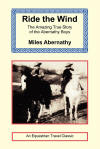 |
| Riding Across Patagonia - When asked in 1879 why she wanted to travel to such an outlandish place as Patagonia, Lady Florence Dixie replied without hesitation that she was taking to the saddle in order to flee from the strict confines of polite Victorian society. “Palled with civilization and its surroundings, I wanted to escape to some place where I might be as far removed from them as possible,” Dixie wrote. This book tells the story of how the aristocrat successfully traded the perils of a London parlour for the wind-borne freedom of a wild Patagonian bronco.
|
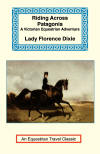 |
| Riding the Milky Way - This book tells the story of how Babette Gallard and Paul Chinn rode 1600 kilometres across France along the St James Way to Santiago de Compostela in Spain. The author is honest about the mistakes they made. She not only explains how to avoid the pitfalls they encountered but also tells the reader what is expected of riders making this ancient pilgrimage. Packed with sketches and photographs, this book will inspire even the most timid traveller, while also giving practical guidance for someone wanting to do a similar journey.
|
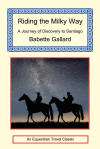 |
| Riding through Siberia – Kate Marsden was a nurse who decided to make a 2000-mile journey to the leper colonies of Yakutsk in the depths of Siberia. She hoped to find an herb which was said to grow there and which was allegedly a cure for leprosy. Nobody believed that anyone could make such a journey, least of all a woman. Marsden’s immensely readable book is a mixture of adventure, extreme hardship and compassion as the author travels the Great Siberian Post Road.
|
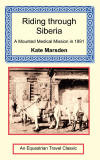 |
| Road to the Grey Pamir - Few equestrian travellers had a more politically radical life than did the American, Anna Louise Strong. She turned her back on her otherwise normal suburban roots and fled overseas. Denouncing capitalism, she began a series of state-sponsored journeys deep into the secretive heart of the recently formed Soviet Union. This book is the story of how Strong accompanied a group of geologists as they rode into the seldom-seen Pamir mountains of faraway Tajikistan. |
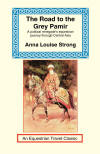 |
| Rural Rides - In the early 1820s William Cobbett set out on horseback to make a series of personal tours through the English countryside. These two books contain what many believe to be the best accounts of rural England ever written, and remain enduring classics. |
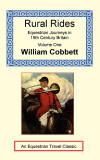 |
| Saddle and Canoe - The twenty-five-year-old Theodore Winthrop was a recent graduate of Yale and a confirmed East Coast intellectual. Winthrop didn’t let his education handicap him however. Instead he set out to ride horses and canoes across some of the most remote portions of the early United States.
|
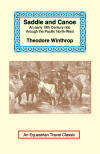 |
| Saddlebags for Suitcases - The year 1939 was a bleak time in England. Fire and darkness loomed on the horizon as war with Germany drew ever closer. In the midst of this national angst young Mary Bosanquet had a revelation. She would toss off college in London, board a steam-ship, voyage to Vancouver, Canada, then buy and ride a horse alone more than 2,500 miles to New York city. The book describes how she was wooed by love-struck cowboys, chased by a grizzly bear and even suspected of being a Nazi spy scouting out Canada in preparation for a German invasion.
|
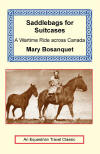 |
| Saddles East - John Beard is the only horseback traveller whose journey can be directly linked to the influence of the famous Buffalo Bill Cody. Beard determined as a child that he wanted to see the Wild West from the back of a horse after a visit to Cody’s legendary Wild West show. In 1948 Beard set off on his horse, Black Diamond, to ride 2,500 miles along the length of the Old Oregon Trail. |
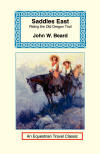 |
| Spanish Pilgrimage - This is the story of Robin and Louella Hanbury-Tenison’s journey to Santiago de Compostela in 1989. Through their journey Robin came to experience a true ‘green pilgrimage,’ an ecological equivalent of the search for religious faith in medieval man. His fascinating book draws together conclusions from a lifetime of exploration. |
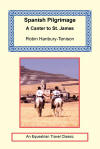 |
| The Tale of Two Horses - In the world-famous travel book, "Tschiffely's Ride", the Swiss Long Rider Aimé Tschiffely recounted how he and his two Criollo horses, Mancha and Gato, set off from Argentina in 1924, bound for faraway Washington DC. Their legendary 10,000 mile ride took them through the mountains and jungles of South and Central America, where they encountered a host of adventures, including rope bridges, vampire bats, sand storms, treacherous mountains, quicksand and hostile natives. Here is the same story but delivered with a new twist. For the first time in history, the story is narrated by the two equine heroes, Mancha and Gato. |
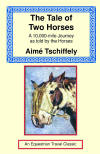 |
The Will to Win - This book recounts the only equestrian journey of its kind undertaken during the 20th century – a mounted trip stretching across 16 countries. Gordon Naysmith, a Founding Member of the Guild, set out in 1970 to ride from the tip of the African continent to distant Germany. The 20,000 kilometre journey took two years and nearly saw him die of thirst in the deserts of Arabia. |
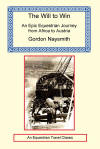 |
Through Five Republics on Horseback – English Long Rider George Ray set out in 1889 to find a lost tribe of sun-worshipping natives who resided in the unexplored forests of Paraguay. The journey was so brutal that it defies belief. The horses were repeatedly attacked by vampire bats. Then Ray and his horses were reduced to sucking dew off leaves to survive. By the time he discovered the tribe, Ray’s clothes were in rags. Ray did eventually ride back to civilization, but not without paying a price for his boldness. He lost two toes to blood-sucking insects. |
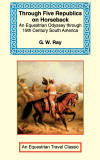 |
Through Mexico on Horseback - At first glance one may wonder how qualified were the two young men who set off from a Texas border town bound for Mexico City in 1931. The author, Joseph Goodwin was a Yankee with a taste for peril. In contrast, his companion Robert Horiguichi was the multi-lingual son of an imperial Japanese diplomat. Along with their mustangs, Pistole and Negra, the amateur adventurers set out to prove that the dangers of the road were as welcome as the pleasures, something for which they did not have to wait long to discover. In one particularly harrowing episode, they were surrounded, shot, and nearly kidnapped by an armed band of Mexican bandits. |
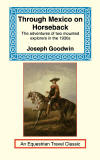 |
Through Persia on a Side-Saddle - In her day English Long Rider Ella Sykes was considered one of the bravest women alive because she rode side-saddle 2,000 miles across Persia, a country few European woman had ever visited.
|
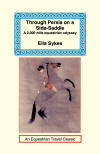 |
Through Russia on a Mustang - Even in the Age of Adventure, there were few men to equal Thomas Stevens. He scouted for the famous African explorer, Henry Morton Stanley. Then in 1866 the American reporter proceeded to pedal a penny-farthing bicycle around the world. No sooner had Stevens returned from his bicycle marathon than he was hired by a New York newspaper to go to Russia on a special assignment. Though the traveller had already lived through dozens of dangers, Russia presented new challenges. Mounted on his faithful horse, Texas, Stevens crossed the Steppes in search of adventure. |
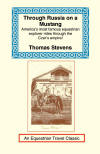 |
Through the Heart of Afghanistan - Few people recall today that Germany and Afghanistan were once close friends, allied in their mutual distrust of the then still-powerful British Empire. Within the space of a few years the British had beaten the Germans on the battlefields of the First World War. A few years later these same English victors used their military machine, complete with state-of-the-art airplanes based in India, to bomb their Afghan neighbours into political submission. It was during the early 1920s that the German Long Rider Emil Trinkler made his legendary trip across the forbidden kingdom of Afghanistan. |
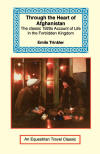 |
Through the Highlands of Shropshire - It was 1933 and Magdalene Weale was faced with a dilemma. How best to explore her beloved English countryside? A motor car was denounced for its lack of involvement with the landscape. The bicycle, a “useful vehicle,” was nonetheless ruled out as it restricted the traveller to much the same view afforded from a car. Plus walking allowed only a limited degree of rural investigation. It seemed logical therefore to set out on horseback. |
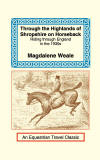 |
To the Foot of the Rainbow - is a moving account of Clyde Kluckhohn’s ride through the stony wastes of Arizona, Utah and New Mexico in search of a geographic legend, “The Rainbow Bridge.” Native American myth stated that somewhere in the rocky wastelands of Navajo-land stood a gigantic, unbelievable arch of pure red stone. No white man had ever seen it. No white man had ever ridden near it. Young in the early 1920s Kluckhohn determined to do just that |
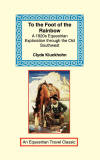 |
| Travels in Afghanistan - It was 1937 and few places on Earth were more remote than Afghanistan. Into this hermit kingdom went Ernest Fox. Technically searching for oil and gemstones for the Afghan king, during his 2,000 mile ride the American Long Rider discovered a countryside unchanged since the days of Marco Polo. |
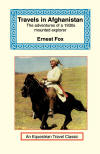 |
| Travels in Papua New Guinea - This is the story of how English Long Rider Christina Dodwell set out to travel alone through the highlands, jungles and rivers of Papua New Guinea. It is the remarkable tale of a two-year expedition which included a thousand-mile journey on a stallion (in a country where almost nobody knew what a horse was). |
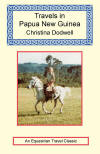 |
| Travels with Fortune - This is the amazing tale of Christina Dodwell’s first adventure: a three-year journey through Africa. Recounted with modesty and good humour, it is a story of great tenacity and incredible courage. |
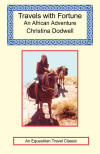 |
| Tschiffely's Ride -
In
1925 Aimé
Tschiffely, a Swiss teacher living in Argentina, set out on an epic ride with
two Criollo horses, Mancha and Gato. The amateur explorer's goal was to travel
ten thousand miles from Buenos Aires to Washington, DC, over some of the world's
most inhospitable country. Their odyssey lasted two and a half years, forced
horses and rider to survive through near-impossible conditions, and ended with a
hero's welcome at the White House. It also made Tschiffely the greatest Long Rider of the 20th century - this book has sold more copies than any other equestrian travel tale in history and has inspired five generations to become equestrian travellers.
For more information, please click here. |
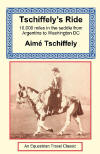 |
| Tschiffely's Ritt – The German translation of “Tschiffely’s Ride,” the most inspirational equestrian travel book ever written. |
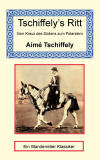 |
| Turkestan Solo - Ella Maillart was the adventurous Swiss Long Rider who made a solo journey through Central Asia in the early 1930s. Setting off from the Tien Shan mountains of Mongolia, Maillart rode horses and camels to the far away walls of fabled Bokhara. |
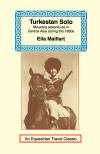 |
| Two Thousand Miles on Horseback – James Meline was a New York journalist turned pony soldier. When the Civil War concluded, Meline decided to partake of one last mounted adventure before he hung up his spurs. He set out in 1866 to make a 2,000 mile ride from Kansas to New Mexico and back. After reaching Santa Fe, Meline spent several days interviewing the legendary scout, Kit Carson, who regaled him with tales of hunting grizzly bears and eluding capture by Indians. |
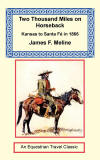 |
| Unbeaten Tracks in Japan – Despite being of moderate means and unhealthy, Isabella Bird chose to venture out into the world, a place which in the late nineteenth century was still full of dangers, discomforts, and unexplored countries. She rode through Hawaii, crossed the Rocky Mountains on horseback, explored Tibet from the saddle and went on to canter across Morocco when she was in her seventies. But her 600 mile solo ride through Japan was a monumental mixture of mounted adventure and keen cultural observation. |
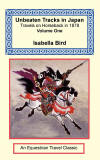 |
| Vier Pferde, Ein Hund Und Drei Soldaten - Es war eine besondere Zeit, eine kurze Zeit des Friedens im kriegsmüden Europa. Die dreißiger Jahre boten drei umherziehende Schweizer Reitern die Gelegenheit einer Reise durch einen, sich vom Krieg erholenden Kontinent, und die Möglichkeit, die letzten Überreste des dörflichen Lebens des neunzehnten Jahrhunderts zu erleben, bevor es endgültig von den Schrecken des zweiten Weltkrieges zerstört wurde. Hans Schwarz, der Autor dieses Reise-Tagebuches, was genau der richtige Mann, um solch eine berittene Expedition zu leiten. Als begeisterter Reiter kam Schwarz auf die Idee, von seiner Heimat in den majestätischen Alpen zu den heißen Steppen der fernen Türkei zu reiten. Dieser Ritt kann nur als idyllisch beschrieben werden. Der liebenswerte Schweizer Weitreiter und seine zwei Begleiter besuchten das winzige Liechtenstein, durchquerten Österreich, erforschten Rumänien, flohen aus Albanien, schafften es durch die Jugoslawien, erreichten endlich die Türkei - und ritten dann wieder zurück! Aus diesem Grunde ist Vier Pferde, Ein Hund und Drei Soldaten mehr als nur ein gut geschriebenes schweizer Abenteuerbuch. Die Reise von Schwarz hat einen legendären Ruf in der deutschsprachigen Welt und inspirierte drei Generationen von schweizer Weitreitern, einschließlich der Reiterlegenden Hans-Jürgen and Claudia Gottet, die auf ihren Arabern von Arabien zur Schweiz ritten. Dieses seltene und wichtige Buch ist reichhaltig mit zeitgenössischen Fotografien illustriert. |
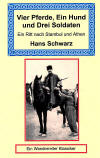 |
| The Wagon Travel Handbook - This is the finest book ever penned about modern wagon travel, a volume which embodies a wealth of hard-earned experience gained by David Grant, the Scottish wagon-master who journeyed around the world in a horse-drawn wagon. Grant has compiled all the information a first time-wagon traveller will need, including sections on interior and exterior wagon design, choice of draught animals, veterinary requirements and frontier formalities. |
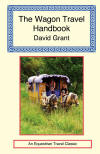 |
| Wartime Ride - Even though the Second World War had begun, J. Wentworth Day began the only wartime ride of its kind, a rural odyssey that took him through Essex, Hertfordshire, Cambridge, Norfolk and Suffolk. The equestrian journey gave the author a glimpse into the living picture of a mediaeval portion of England which, until 1939, had hardly changed for centuries. |
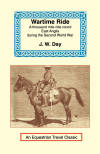 |
|
White Horses Over France - This book tells the story of how the first Camargue horses set foot on British soil in the late summer of 1984, when Robin and Louella Hanbury-Tenison rode 1,000 miles from the south of France to Cornwall. |
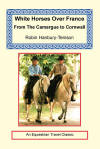 |
| Winter Sketches from the Saddle – John Codman was a sea captain by trade, who became an avid Long Rider in his later years. This book recounts how he rode across New England during 1887. |
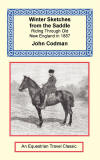 |
For more information about any of these books, please contact the Long Riders Guild